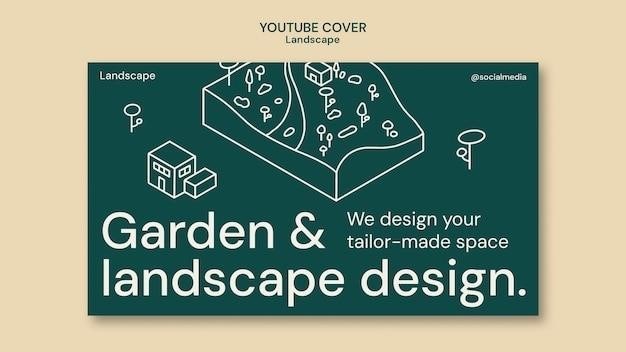Permaculture⁚ A Designer’s Manual ─ An Overview
Bill Mollison’s seminal work, first published in 1988, remains the definitive permaculture design manual. It serves as the textbook and curriculum for numerous 72-hour design certificate courses globally, expanding upon his earlier works, Permaculture One and Permaculture Two.
The Definitive Text
Published in 1988, Permaculture⁚ A Designer’s Manual by Bill Mollison is widely considered the definitive text on the subject. This comprehensive volume has served as the foundational textbook for countless permaculture design courses worldwide, establishing a standard curriculum for aspiring permaculture designers. Its enduring influence is evident in its continued use as a primary resource for both students and experienced practitioners. The book’s detailed explanations of permaculture principles and design methodologies have shaped the understanding and application of permaculture across diverse geographical locations and contexts. Its enduring relevance stems from its thorough approach and practical guidance, making it a vital tool for anyone serious about learning and implementing permaculture design.
Curriculum for Permaculture Design Courses
Mollison’s Permaculture⁚ A Designer’s Manual isn’t just a book; it’s a curriculum. For decades, it has formed the backbone of numerous 72-hour Permaculture Design Certificate courses internationally. The detailed content and structured approach make it ideal for teaching the core principles and practical applications of permaculture design. The book’s comprehensive coverage of topics, from ethical considerations to specific design strategies for both rural and urban environments, provides a structured learning pathway for students. Its use as a primary teaching tool ensures a consistent, high-quality educational experience for those seeking permaculture design certification, contributing to the standardization and professionalism within the field.
Enlarging on Permaculture One and Two
Permaculture⁚ A Designer’s Manual significantly expands upon Mollison’s earlier works, Permaculture One (1978) and Permaculture Two (1979). While those initial texts laid the groundwork, the Designer’s Manual provides a far more comprehensive and detailed exploration of permaculture principles and design methodologies. It delves deeper into practical applications, offering a wealth of information not found in the earlier publications. The Manual presents a more mature and refined understanding of permaculture, building upon the foundational concepts established in the previous books and incorporating years of further research and practical experience. It’s considered a vital progression, moving beyond introductory concepts to offer a sophisticated and in-depth guide to permaculture design.
Bill Mollison’s Contribution
Bill Mollison, the founder of permaculture, authored the seminal Permaculture⁚ A Designer’s Manual, shaping sustainable design education worldwide.
Founder of the Permaculture Institute
Bill Mollison’s legacy extends beyond his influential book. In 1979, he established the original Permaculture Institute, a pivotal institution for disseminating permaculture principles and practices. This institute provided crucial training and education, equipping students with the practical skills to design sustainable systems. The institute’s curriculum, heavily influenced by Mollison’s own experiences and insights, emphasized holistic design methodologies. Its global reach helped spread permaculture’s impact, fostering a network of practitioners and educators dedicated to sustainable living and environmental stewardship. The institute’s continuing work reflects Mollison’s enduring vision for a more sustainable future, built on the principles he pioneered. His founding of the institute solidified permaculture’s place as a serious and impactful movement.
Impact on Sustainable Design Education
Bill Mollison’s Permaculture⁚ A Designer’s Manual revolutionized sustainable design education. Its comprehensive approach, integrating ecological principles with practical design methodologies, became a foundational text for countless permaculture courses worldwide. The 72-hour certificate program, directly informed by the manual, standardized permaculture design training, creating a globally recognized qualification. The book’s accessibility, despite its depth, made complex ecological concepts understandable for a wide audience, fostering a broader understanding of sustainable practices. Mollison’s emphasis on holistic design thinking, encompassing social, economic, and environmental considerations, profoundly impacted how sustainable design is taught and practiced, influencing curricula beyond permaculture itself. His legacy continues to shape the field of ecological design education.

Key Concepts and Principles
Mollison’s manual details permaculture ethics, design methodologies for diverse settings, and natural farming techniques, emphasizing working with nature.
Ethics of Permaculture
Central to Mollison’s Permaculture⁚ A Designer’s Manual is the emphasis on a strong ethical foundation. These guiding principles aren’t merely suggestions but cornerstones of the entire design philosophy. The core ethics—earth care, people care, and fair share—provide a framework for decision-making in all aspects of design. Earth care prioritizes the health and well-being of the planet, encompassing soil regeneration, water conservation, and biodiversity protection. People care focuses on meeting the needs of human communities while fostering a sense of responsibility and stewardship. Fair share emphasizes equitable resource distribution, ensuring that future generations have access to the resources they need to thrive. These three interconnected ethics underpin the sustainable and equitable designs that are the hallmark of permaculture.
Design Methodologies for Urban and Rural Settings
Mollison’s Permaculture⁚ A Designer’s Manual details adaptable design methodologies applicable to diverse environments. The book transcends the traditional rural focus, offering strategies for urban permaculture projects as well. Key elements include site analysis, considering factors like sun exposure, water availability, and existing infrastructure. This involves identifying potential resources and constraints within the specific setting. Design strategies encompass elements like water harvesting, greywater recycling, and vertical gardening in urban contexts, while in rural settings, the focus might shift towards larger-scale systems like agroforestry and water management for agriculture. The adaptable nature of the design principles allows for creative solutions tailored to the unique challenges and opportunities presented by each environment.
Natural Farming Techniques
Permaculture⁚ A Designer’s Manual extensively covers natural farming practices, emphasizing ecological balance and minimizing external inputs. The book promotes techniques like composting and mulching to enrich soil fertility, reducing reliance on synthetic fertilizers. It advocates for companion planting, strategically arranging crops to enhance growth and pest control through natural symbiotic relationships. Water conservation is crucial, with techniques like swales and rainwater harvesting detailed for efficient water management. Pest and disease control emphasizes preventative measures and biological controls over chemical interventions, fostering a resilient ecosystem that naturally resists imbalances. The manual encourages careful observation of natural processes to guide these farming choices, promoting a holistic and sustainable approach to food production.
Applications and Design Strategies
Mollison’s manual details permaculture’s broad applications, encompassing diverse settings from rural farms to urban spaces, offering practical design strategies for sustainable living.
Property Design
Permaculture⁚ A Designer’s Manual provides extensive guidance on designing properties for sustainable living. It goes beyond simply planting trees and gardens; the book delves into the intricate relationships between elements within a property. This includes water management, effective use of sunlight and shade, and the strategic placement of buildings and other structures to optimize resource use and minimize environmental impact. The book emphasizes creating resilient systems that work with nature rather than against it, emphasizing observation of the land’s existing characteristics to inform design choices. Detailed examples and illustrations help readers translate these principles into practical, site-specific designs. The design process outlined promotes biodiversity, integrates multiple functions into individual elements, and ultimately aims to create a self-sustaining and harmonious living space.
Sustainable Soil, Water, and Plant Systems
Mollison’s Permaculture⁚ A Designer’s Manual dedicates significant attention to creating sustainable systems for soil, water, and plants. The book emphasizes soil health through techniques like composting, mulching, and minimizing soil disturbance. Water harvesting and efficient irrigation methods are crucial components, promoting water conservation and reducing reliance on external water sources. Plant selection is carefully considered, focusing on species appropriate to the climate and site conditions, maximizing biodiversity and resilience. The book details strategies for creating productive and diverse plant guilds, where different species interact beneficially, enhancing growth and overall system health. These integrated systems aim to mimic natural ecosystems, fostering self-regulation and reducing the need for external inputs, creating a truly sustainable approach to agriculture and landscaping.
Integration of Legal and Economic Systems
Beyond ecological considerations, Mollison’s Permaculture⁚ A Designer’s Manual highlights the importance of integrating legal and economic frameworks into permaculture designs. The book emphasizes the need to understand and work within existing legal structures regarding land ownership, water rights, and zoning regulations. It encourages exploring alternative economic models, such as community-supported agriculture (CSA) or cooperative ventures, to ensure the long-term viability of permaculture projects. Strategies for generating income from permaculture systems, like selling surplus produce, providing design services, or creating value-added products, are discussed. The manual stresses the importance of creating resilient and equitable systems that are both environmentally sound and economically sustainable, ensuring the project’s longevity and positive social impact. This holistic approach is crucial for establishing thriving permaculture projects that are both ecologically and economically viable.

Accessibility and Resources
The manual is available for purchase from various online retailers and directly from Tagari Publications. Numerous online courses and supplementary learning materials further enhance understanding and application of permaculture principles.
Purchasing the Manual
Acquiring Bill Mollison’s Permaculture⁚ A Designer’s Manual is readily achievable through multiple avenues. Direct purchase from Tagari Publications, the publisher, ensures support for the Mollison estate and independent publishing. Online retailers such as Amazon offer convenience, though supporting independent sellers or the publisher directly contributes more directly to the legacy of permaculture. Be aware of varying editions and prices; comparing options before purchase is advisable. The book’s enduring popularity and consistent demand mean copies may be found through secondhand booksellers, offering a more budget-friendly route for those seeking a copy. Regardless of the chosen method, acquiring this foundational text remains a significant step in any permaculture journey.
Online Courses and Resources
Beyond the printed manual, a wealth of online resources complements the learning experience. Numerous websites offer introductory permaculture courses, often incorporating elements from Mollison’s work. These online platforms provide flexibility, allowing learners to engage at their own pace and convenience. Podcasts and video lectures further expand access to permaculture principles, often featuring discussions directly referencing the Designer’s Manual. Interactive forums and online communities provide opportunities for questions, discussions, and networking with other permaculture enthusiasts. These digital tools supplement the book, offering a dynamic and interconnected learning environment that extends beyond the pages of the manual itself.
Additional Learning Materials
To further enhance understanding and application of the principles within Mollison’s Permaculture⁚ A Designer’s Manual, a wide array of supplementary materials are available. These include numerous books by other permaculture experts which expand upon specific concepts or offer different perspectives. Many publications focus on practical applications of permaculture design in various climates and contexts. Workshops and hands-on learning experiences, offered by various permaculture institutes and organizations worldwide, offer valuable practical skills. Documentary films and videos also provide visual demonstrations and case studies, enriching the theoretical knowledge gained from the manual. These diverse resources work in conjunction with the Designer’s Manual to provide a comprehensive and enriching permaculture education.
